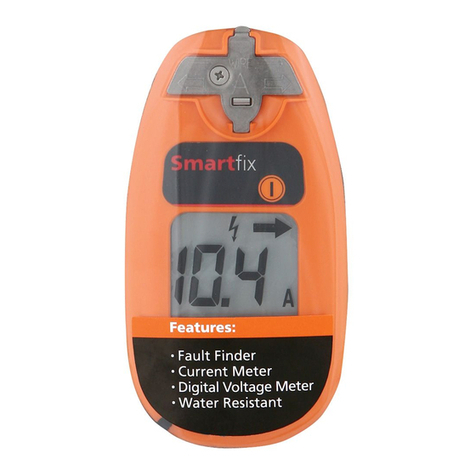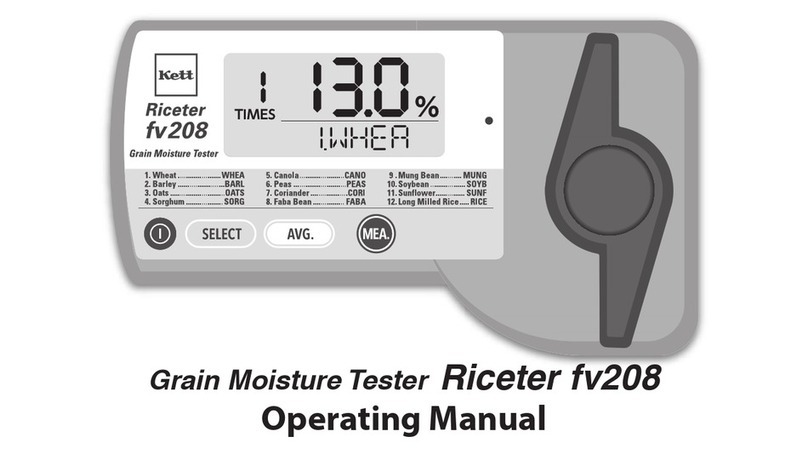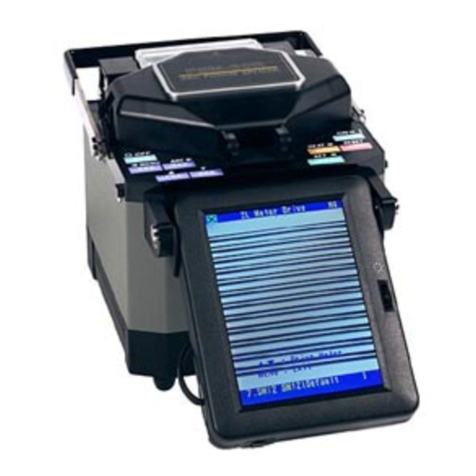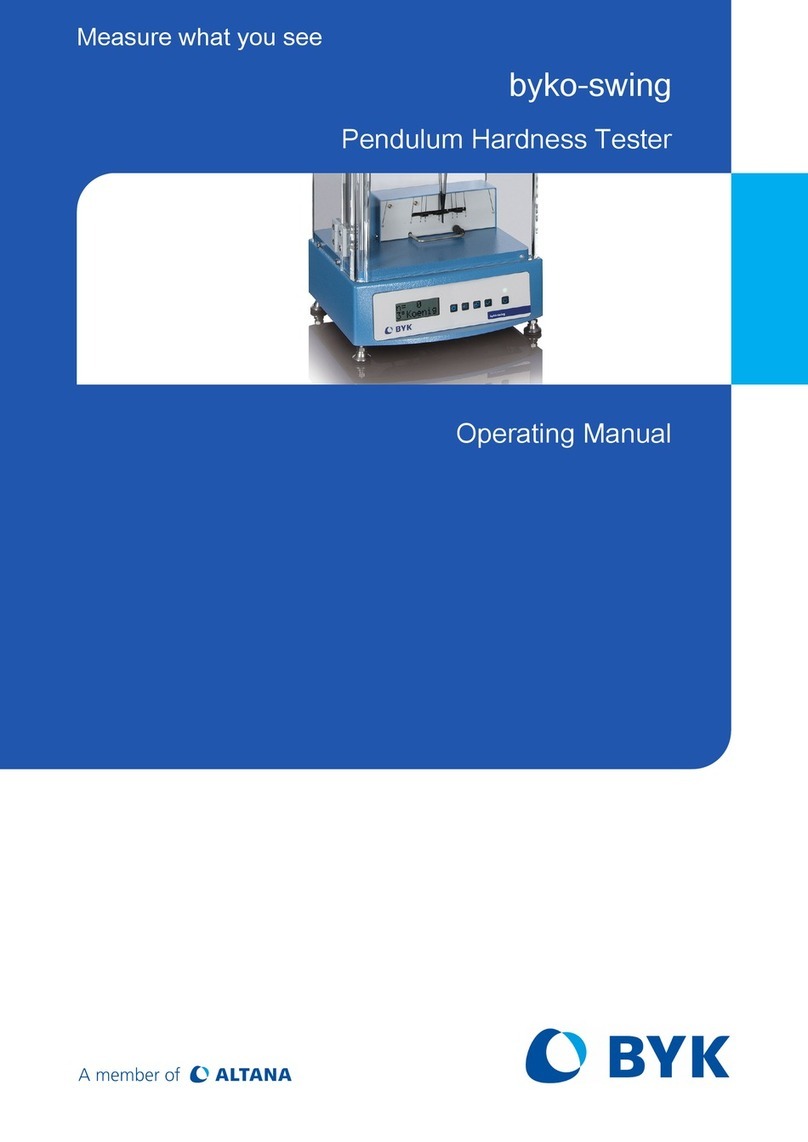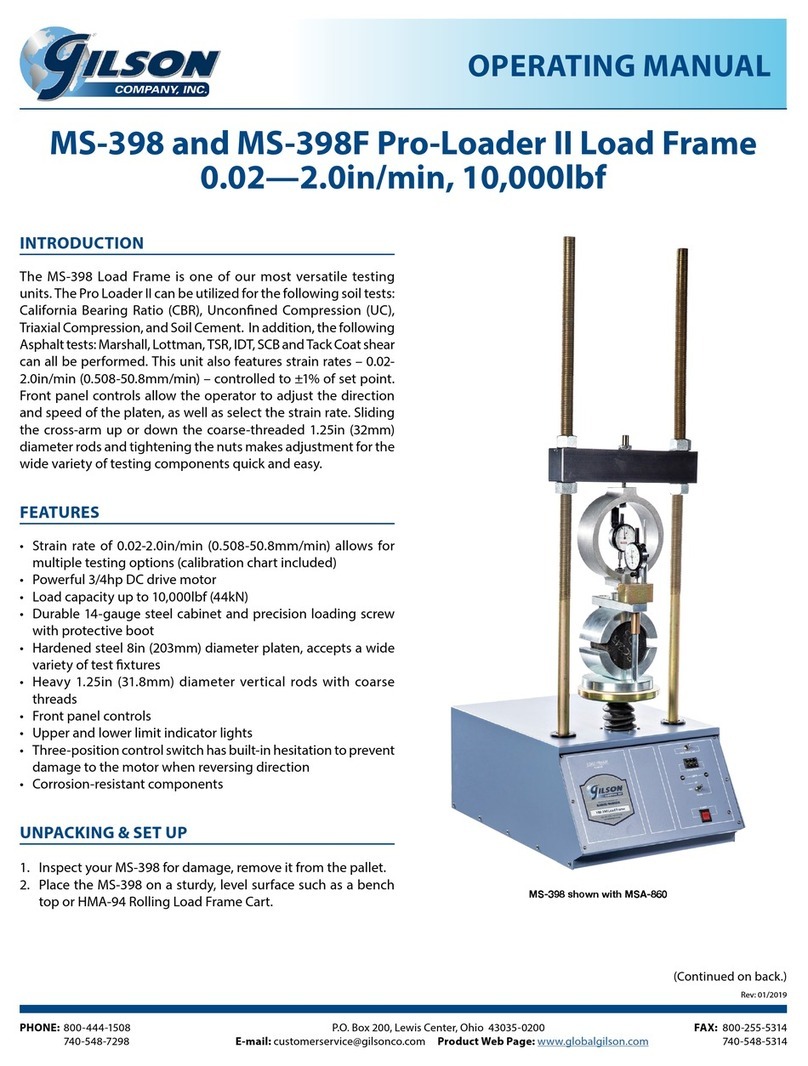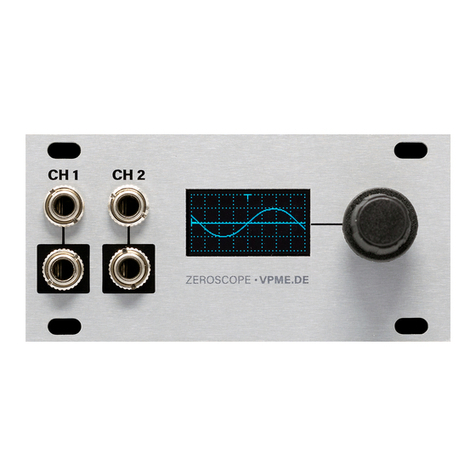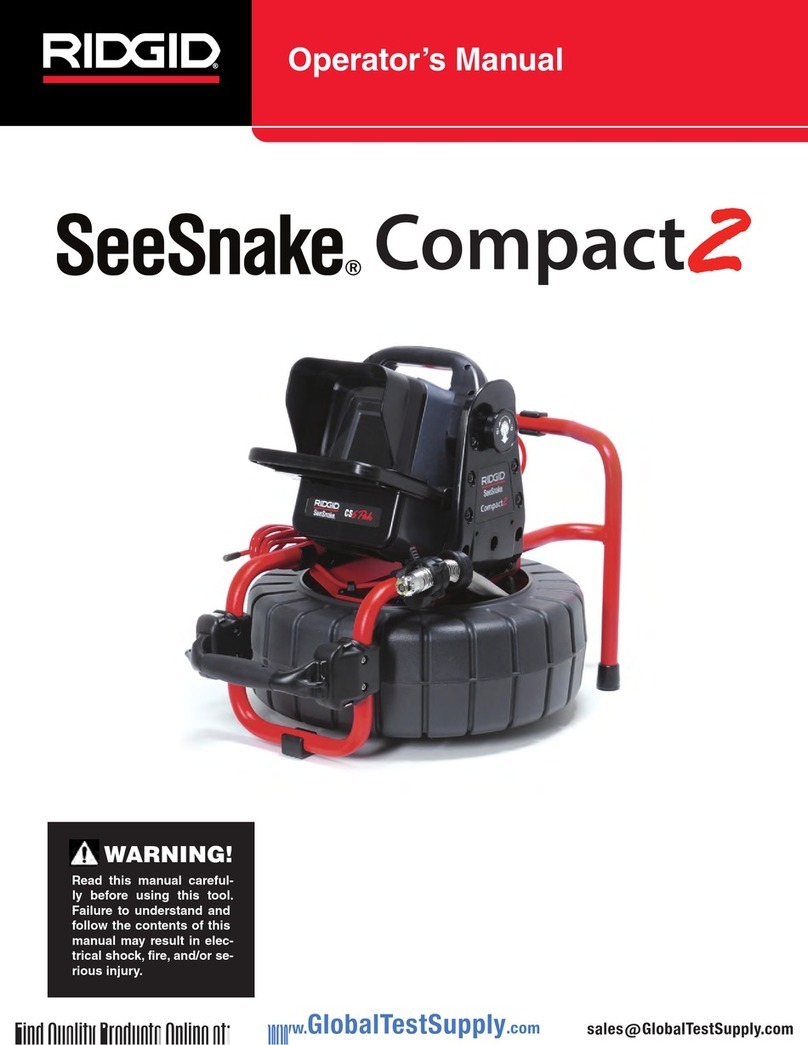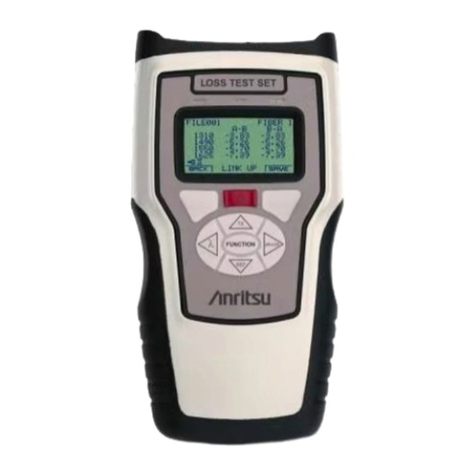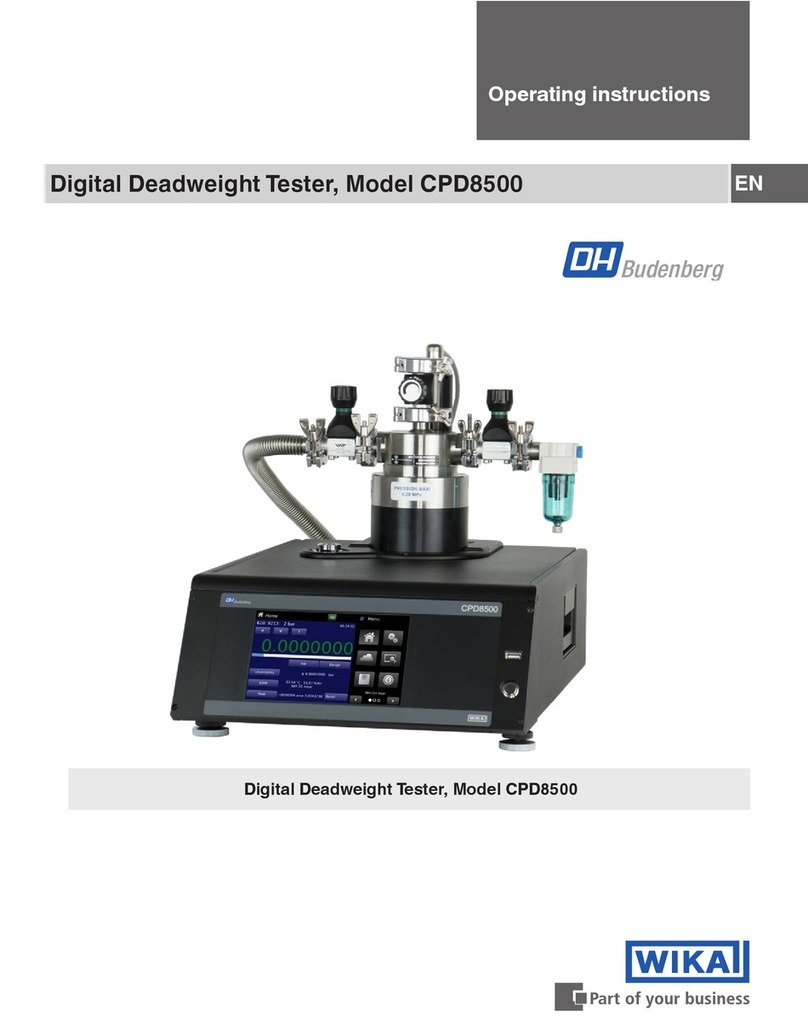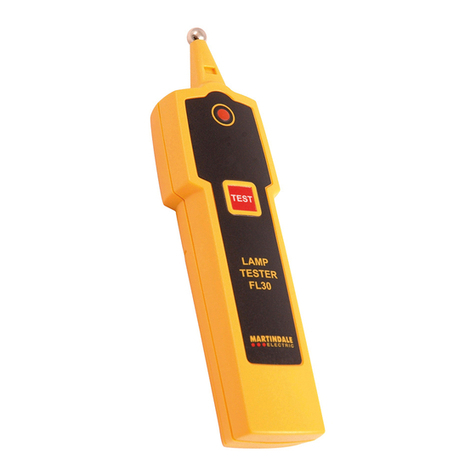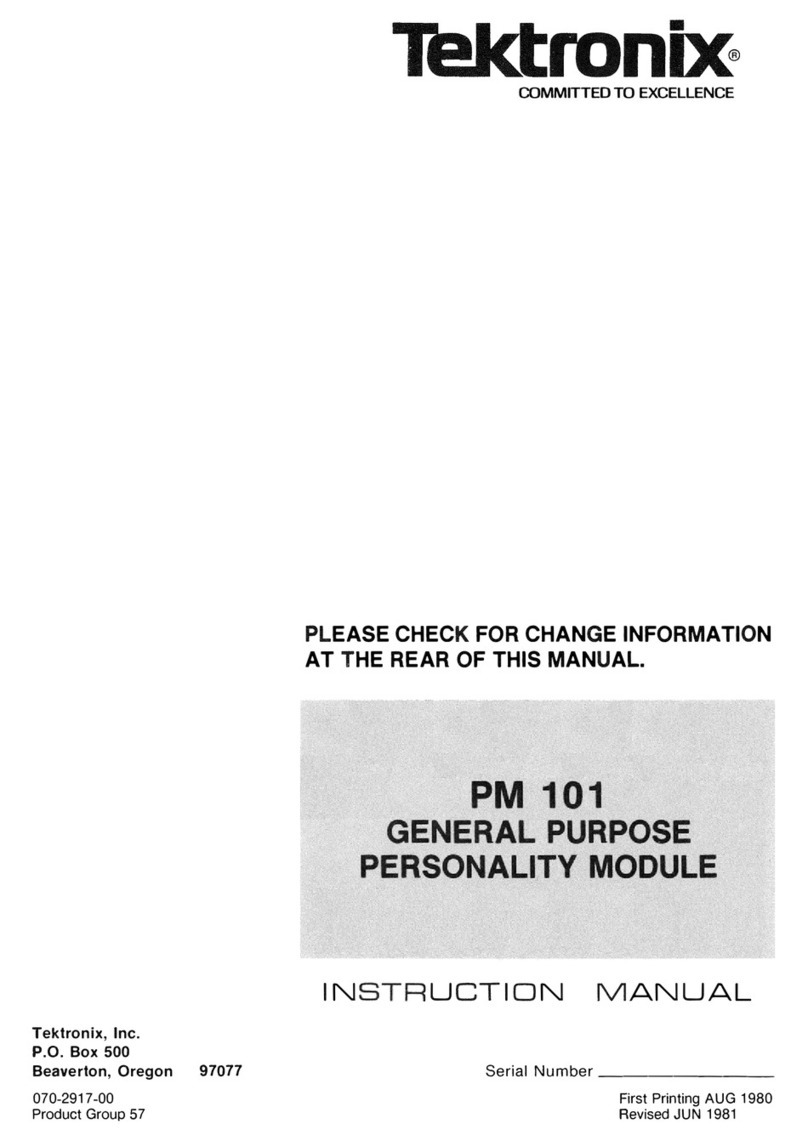Mesa BGI HiVolCal HVC1 User manual

12100 West 6th Ave.
Lakewood, CO 80228
www.MesaLabs.com
MK101-20Rev.A
HiVolCal User Manual
High Volume
Field Calibrator
Model HVC1 (7 to 54 CFM)
NIST Traceable – ISO 9001:2008

2
Table of Contents.
S
ection T
opic P
age
1.0 QuickStart 3
2.0 Introduction 3
3.0 Specifications 4
4.0 P
rincipleofOperation 6
5.0 InstrumentSetUp 6
6.0 Using the HiVolCal®6
7.0 Software 1
1
8.0 Maintenance 1
1
9.0 Safety 1
1
10.0 Warranty 1
2
Appendix A Qs/Qa Relationship 13
A
ppendixB PSeriesSetUp 1
5

3
1.0 Quick Start
Step 1: Remove the HiVolCal®from its carrying case and turn it on.
Step 2: Remove the inlet, if any, from your sampler.
Step 3: Install the HiVolCal®measuring head directly on your sampler or utilize the optional
adaptor. Calibration should be performed with a clean filter installed.
Step 4: Start the sampler under investigation.
Step 5: You may now read the HiVolCal®screen to determine volumetric flow rate, standard
flow rate, ambient temperature and barometric pressure.
2.0 Introduction
The BGI HiVolCal®is an orifice flow audit device compatible with EPA FRM samplers and other high
volume air sampling devices. The HiVolCal®is manufactured and calibrated in Mesa Lab’s ISO
9001:2000 facility. It provides a LCD indication of volumetric flow rate, standard flow rate,
barometric pressure and ambient temperature. It operates on four AA alkaline energy cells. The
electronics are all housed in the control module.

4
3.0 Specifications
Flow Rate Range: 7 – 54 CFM (± 1%)
Flow Accuracy 0.75% of reading
Temp. Operational Range -30° C to 55° C
Temp. Reading Range -30° C to 55° C
Temp. Accuracy 0.5° C
Barometric Pressure Range 400 to 800 mmHg
Barometric Pressure Accuracy 5 mmHg
Dimensions:
Measuring Head 4.5 in. OD (11.4 cm) X 9.5 in. high (24.1 cm)
Control Module 8 in. high (20.3 cm) X 4 in. wide (10.15 cm) X 1.7 in.
thick (4.32 cm)
Combined weight 2.2 lbs (1 kg)
Carrying case:
Dimensions: 18 in wide (45.7 cm) X 13 in high (33 cm) X 7 in. thick
(17.8 cm)
Weight complete with contents: 5.5 lbs (2.5 kg)
Your HiVolCal comes with the following:
HiVolCal® calibrator
4 AA batteries
Fitted Hard Carrying Case
Calibration Certificate
The HiVolCal®in its carrying case is shown in Figure 1 on the following page.
Accessories/Parts
Part No. Description
HVC10217 HiVol Carrying Case
HVC10200 Rubber Base Gasket
3328 HiVol Calibrator Adapter Plate
3114 HiVol to Hi-Q Filter Adapter
3387 HiVol Calibrator to Digital Adapter

5
Figure 1 – HiVolCal®in Travel Case

6
4.0 Principle of Operation
The HiVolCal®measures volumetric and standard flow rate by utilizing a pressure transducer to
assess the pressure drop caused by air being drawn through an orifice. As the flow rate through the
orifice increases the pressure drop increases as the square root. Twice the flow rate yields a four
times increase in pressure drop. A desirable feature of the orifice is that most of the pressure drop
created by the instrument is recovered downstream of the orifice. Therefore, measurements are
made near the operating conditions of the sampler.
The microprocessor uses an algorithm to combine the signal from the pressure transducer,
barometric pressure sensor, and ambient temperature sensor to provide an instantaneous flow rate.
To eliminate fluttering of the on screen display of flow rate, the first 20 readings are averaged and
then carried on as a rolling average. Barometric pressure and temperature are monitored and
displayed on a continuous basis, when the instrument is switched on. A cutaway diagram of the
measuring head is shown in Figure 2 and a schematic diagram of the system is shown in Figure 3.
5.0 Instrument Set-up
Important notes about using the HiVolCal®
A. The measuring head must have no air flowing through it. Every time the instrument is
switched on, it re-zeros itself. If air is flowing, that flow rate will be set as zero.
B. The control module must be in the position in which it is going to be used, when switching
on (horizontal or vertical). The case houses the pressure transducers, which are subject to
the force of gravity. Positional changes can give rise to minor errors. This effect applies to
all devices containing pressure transducers.
C. In order to perform the most precise measurement audit, it is necessary for the HiVolCal®to
be in thermal equilibrium with the ambient environment in which the sampler is located.
The best procedure is to deploy the HiVolCal®, out of its carrying case, for 10 minutes prior
to the audit. Additionally, if the HiVolCal®is subject to a temperature change of more than
five degrees during use, it should be rebooted.
When the HiVolCal®is switched on
XX
% battery capacity remaining is displayed on the
screen. So long as more than 10% is indicated, it is safe to proceed in that at least one hour
of power is available. The audit is now ready to be performed.
6.0 Using the HiVolCal®
6.1 To perform an audit
Turn off the sampler to be audited. Remove the inlet of the sampler and install the HiVolCal®.
Use adaptor as necessary. Turn on the HiVolCal®, wait for the screen to finish the startup boot,
and then turn on the air sampler. Location of on/off switch shown in Figure 4.
The flow resistance of the HiVolCal®head may cause momentary instability in the air samplers
flow control circuit. Once the air sampler’s main screen flow rate indicator stabilizes, the reading
may be taken. A simple audit data format is shown in Table 1.
6.2 To perform a calibration.
The procedures and calculations for using the HiVolCal®to calibrate a sampler are the same as
an audit, except the flow rate tolerance of is usually +2% rather than +4% as suggested for an
audit.

7
Figure 2 – Sectional View of Flow Measuring Head

8
DIFF. PRESSURE
SENSOR
AIR FLOW
TO HIGH
VOLUME
SAMPLER
BAROMETRIC
PRESSURE
SENSOR
MICRO PROCESSOR
AMBIENT TEMP. PROBE
B P
Ta
Q a
Q s
: 7 6 0 . 0 m m H g
: 2 2 . 8 ° C
: 1 6 . 6 7 C F M
: 1 6 . 6 7 C F M B a t t
1 0 0 %
Figure 3 – Schematic Diagram of HiVolCal®

9
Figure 4 – HiVolCal®Control panel

10
Table 1. Audit Data Format
Audited Instrument:
Make:___________________________ Model:_____________________ S/N:________________
Date:__________________ Time:________________ HiVolCal®S/N:________________________
Flow Rate – Lpm
Sampler:___________ % diff. = [(HiVolCal®-sampler)/HiVolCal®]x100
HiVolCal®:___________ Allowed diff. = 4%; Pass________ Fail_________
Ambient Temp. – C
Sampler:___________
HiVolCal®:___________ Allowed diff. = 2 C; Pass________ Fail_________
Barometric Pressure – mm of Hg
Sampler:___________
HiVolCal®:___________ Allowed diff. = 10 mm; Pass________ Fail_________

11
7.0 Software
All BGI calibrators are designed to operate with the OpenCal software. The software allows the user
to change the display units for flow, temperature, and pressure. You can also view and save a real-
time data stream. To download this data, visit our website at: http://bgi.mesalabs.com/software/. For
further information on changing the display units of your calibrator, refer to Appendix B.
8.0 Maintenance and Recalibration
8.1 User Maintenance
Beyond battery replacement, the only part of the instrument requiring attention is the base gasket.
It must be maintained in perfect condition in order to maintain an airtight seal.
As with all calibration instruments, it is essential that they be handled with care and kept clean. At
the first sign of damage their use should be discontinued and it should be returned for
inspection/repair.
8.2 Factory Recalibration
Your HiVolCal is a NIST-traceable high-precision standard with few moving parts. The calibration
certificate you received with your unit is valid for one year from the date of certification.
Environmental factors, product wear, drift of sensors or inadvertent damage may adversely affect
your HiVolCal’s measurement accuracy or general performance. For these reasons, Mesa highly
recommends that you return your HiVolCal to our manufacturing and calibration facility in Butler, NJ
on an annual basis to ensure its measurement integrity.
Recertification at our facility include any necessary repairs, with the exception of replacing the
electronic boards, which will incur a fee. All HiVolCals returned to our facility for recertification will
receive both a pre- and post-calibration.
9.0 Safety
The four AA batteries should only be replaced with good quality alkaline energy cells and should be
promptly removed when expired, to prevent leakage and chemical damage to the electronic
components. When the instrument is placed in long term storage over two months, always remove
the batteries.
Even though there is no reason to disassemble the electronics box, should the need arise, always
remove the batteries.
Adjustable potentiometers are contained within the electronic housing, which are factory set during
calibration. If these are turned, the calibration will be lost and factory recalibration will be required.

12
10.0 Warranty Information
Mesa Labs warrants equipment of its manufacture and bearing its nameplate to be free from defects in
workmanship and material. We make no warranty, express or implied, except as set forth herein. Mesa's
liability under this warranty extends for a period of one (1) year from the date of product’s shipment.
Mesa Labs warrants service performed on equipment at our factory for a period of ninety (90) days and
spare parts for a period of sixty (60) days. During these periods, the warranty is expressly limited to
repairing or replacing any device or part returned to the factory and proven defective upon evaluation.
These warranty periods will not be extended under any circumstances.
Mesa assumes no liability for consequential damages of any kind. The purchaser, by acceptance of this
equipment, shall assume all liability for consequences of its misuse by the purchaser, its employees, or
others. Purchaser is responsible for all damages resulting from field repairs and installation of equipment
and parts. This warranty will be void if the equipment is not handled, transported, installed, or operated
in accordance with our instructions. If damage occurs during transportation to the purchaser, Mesa must
be notified immediately upon arrival of the equipment.
A defective part in the meaning of this warranty shall not, when such part is capable of being repaired or
replaced, constitute a reason for considering the complete equipment defective. Acknowledgment and
approval must be received from Mesa prior to returning parts or equipment for credit. To obtain a
Return Material Authorization (RMA), contact csbutler@mesalabs.com with details of the warranty or
service claim. Purchaser is responsible for return shipment of equipment to the factory for warranty and
non-warranty repairs. Mesa Labs will provide ground shipment to the purchaser for warranty repairs. All
shipments from Mesa Labs will be handled by FedEx, unless otherwise requested. If the purchaser elects
to use a third party freight forwarder or another shipping carrier, the purchaser is thereby responsible
for the shipment.
Mesa Labs periodically makes engineering changes and improvements on instruments of its
manufacture. We are under no obligation to retrofit these improvements and/or changes into
instruments which have already been purchased.
For refund of new products, equipment must be in a new and unused condition. A restocking fee of 30%
of the product’s value will be charged for returns after thirty (30) days. Mesa Labs will not accept any
returns after ninety (90) days.
No representative of ours has the authority to change or modify this warranty in any respect.

13
Appendix A. Qs/Qa Relationship
U.S. EPA uses QS, known as standard air flow rate, for reporting PM10. This means that the flow rate is
reported to Standard conditions. For the U.S. EPA, these conditions are 25° C and 1 atmosphere
pressure. (1 atmosphere = 760 mm of Hg = 29.92 in of Hg = 1013.25 millibars = 1013.25 hecto
Pascals).
The standard conditions outside of the U.S. are 0° C and 1013.25 mb.
Qs is calculated using the following equations:
QS= Qa* (BPa/760)*(298.15/Ta+273.15) For U.S. applications when Ts=25° C and BPs=760 mm of Hg
QS= Qa* (BPa/1013.25)*(273.15/Ta) For world applications when Ts=0° C and BPs=1013.25 mb
Your HiVolCal®performs this calculation to provide Qs, Qa, Ta, and BP on a continuous basis. At the
same time, the two most popular Barometric pressure units (mm of Hg and millibars or hecto Pascals)
are also provided. This results in the following screen:
BP in mm of Hg BP in hecto Pascals
(millibars)
Actual Flow Rate at
Local BP and T Ambient Remaining
Battery Power
Standard Flow Rate
(Actual Corrected to Standard Conditions)
Ambient Temp. B P
T a
Q a
Q s
: 7 6 0 m m
: 2 2 . 8
: 1 6 . 6 7 C F M
: 1 6 . 6 7 C F M
1 0 1 3 m b
B a t t
1 0 0 %
3138
Remembe
r, Qs is always set to sea level conditions, but the Standard temperature is always factory set
to either 25° C (US EPA, Canada and other countries using US EPA conditions) or 0° C. If the Firmware
version contains the letter W (for world) the temperature base is 0° C.

14
Appendix B. Changing display units using OpenCal
All calibrators with the letter P in the Version number of the start up screen are equipped with user
selectable display parameters.
All units are shipped from the factory with the following default parameters installed:
BP:760.0mmHg
Ta:22.8°C
Qa:16.67CFMBatt
Qs:16.67CFM100%
To change these measurement units, the BGI OpenCal software may be downloaded at
bgi.mesalabs.com/software.
After you have downloaded and installed this software, connect your deltaCal to your computer with
either an RS-232 serial cable or a USB-serial adapter prior to opening the software.

15
If the connection is successful, a green box and the number of the com port will be displayed. You will
also see the details of your calibrator.
In the event that a com port is not automatically selected, select:
Click on it to go to:
If there is no com port displayed, set the cursor on the down arrow to select the correct com port. Save
this setting before exiting this screen.

16
In the future when the same calibrator is connected to the same computer a port connection will be
instantly established. You may now select:
Clicking on this icon will open the parameter selection area and permit a wide variety of measurement
units to be displayed. The initial display will be the factory default values.
Five choices of units of pressure are available. In the order presented they are:
mmHg - millimeters of Mercury
inHg - inches of Mercury
kPa - kilo Pascals
Atm - Atmospheres
mb - Millibars
At this point it is important to note that these parameters may all be changed while air is
flowing through the instrument. This is a useful feature as it may aid the investigator to achieve a
better "feel" for the most favorable units to utilize.

17
Three choices of units of Temperature are available:
ºC - Celsius
ºF - Fahrenheit
ºK - Kelvin
Five choices of flow rate units are available:
LPM - Liters per minute
CMM - Cubic meters per minute
CCM - Cubic centimeters per minute
CFM - Cubic Feet per minute
MPM - Moles per minute
The reference temperature is the "base" to which the Standard flow rate is presented. Choose the
reference temperature that is appropriate for reporting standardized flow to your local air monitoring
agency. In the USA and countries that follow the US EPA regulations, this temperature is 25°C. .
Once your selections have been made, press the button and unplug the cable.
Table of contents
